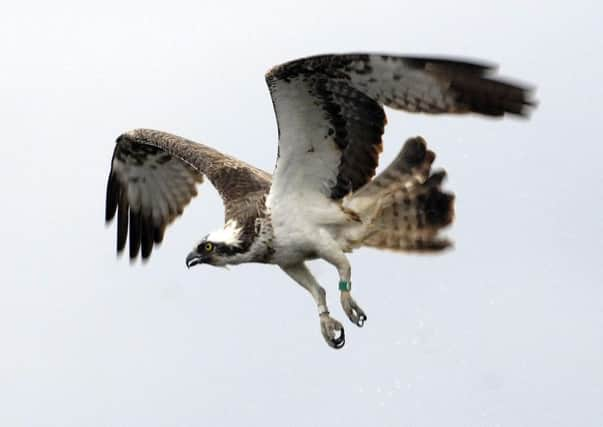Lost Forfar osprey turns up in Africa


The three-year-old male, known as Blue YD, was born on a Scottish Wildlife Trust (SWT) reserve in Angus and had been fitted with a satellite tag.
But conservationists lost track of the young bird after its tag stopped transmitting in May 2014.
Advertisement
Hide AdAdvertisement
Hide AdNow Blue YD has been sighted in Senegal, a popular spot for wintering ospreys.
He was spotted by chance by staff and volunteers from SWT’s sister charity, the Leicestershire & Rutland Wildlife Trust, which runs Rutland Osprey Project.
The Rutland team has been visiting West Africa since 2011 as part of their Osprey Flyways Project, which aims to educate African school children about osprey migration.
During this year’s trip, the team travelled to Lompoul sur Mer, in western Senegal, to locate a satellite-tagged female bird known as 30(05).
It was there, on a 30km stretch of white sandy beach where around 100 ospreys spend their winters, that the chance encounter with Blue YD took place.
Blue YD was fitted with a light-weight tracker in July 2012 when he hatched at the SWT reserve near Forfar.
Since the tag stopped transmitting in May 2014, the Scottish team has received sporadic eye-witness reports of Blue YD’s travels.
He has previously been seen in St Andrews and North Yorkshire, but will stay in Senegal until spring.
Advertisement
Hide AdAdvertisement
Hide AdJonathan Pinnick is assistant manager at SWT’s Loch of the Lowes visitor centre, which is world-famous for ospreys including the now legendary Lady.
He said: “It’s wonderful to learn more about the life of a bird that we have followed since it was a fledgling, and it shows the value of tagging in allowing us to track the life history of individual birds.
“Perhaps he will be spotted back in Angus this summer, hopefully breeding and helping the continued recovery of the osprey population in Scotland.”
John Wright, field officer for Rutland Osprey Project, said: “It was fantastic to see that Blue YD was alive and well.
“He’ll no doubt be enjoying the final few weeks of warmth before he makes his way back to the UK for the breeding season at the end of March.”
Rab Potter, SWT reserves manager for north-east Scotland, said: “Ospreys are a wonderful conservation success story.
“Once extinct in the UK, there are now around 240 breeding pairs in the UK.
“But for such a high-profile species, there’s still an awful lot we don’t know.
Advertisement
Hide AdAdvertisement
Hide Ad“That’s why satellite tagging is so important - because it helps us get a better insight into the lives, migration routes and behaviours of these magnificent birds.”
